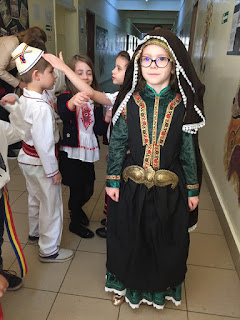This year on the 14th of November we celebrated the National Day of Dobrogea, the region where our city is located.
Here is a very short history of the region:
In Antiquity, the Black Sea Basin represented one of the most interesting areas, from the historical point of view. Inhabited by various populations (Thracians, Getae, Scyths) with different degrees of culture and civilization, these territories were intensely colonized by the Greeks in the 8th – 4th centuries BC, Greek colonies flanking the whole Black Sea coast are a testimony in this regard. Without turning this territory into a Greek one, the Greek influence proved to be rather strong.
Gradually, the Dobrogea region is incorporated into the scope of interest of some of the greatest powers of Antiquity: the Roman Empire, the Byzantine Empire, and, after a few barbarian invasions and migratory waves (Huns, Slavs, Bulgarians, Petchengs, Cumanians and the last ones the Tartars and Turks), in the 14th century another empire is in expansion in this region, the Turkish Empire.
Dobrogea and its residence town, Constanta, are integrated in a Turkish province, being conquered by military force, starting with the 15th century till the end of the 19th century, when, after the Independence War from 1877-1978 (with the Ottoman Empire), the province of Dobrogea is back in the Romanian state borders.
Our school celebrated this "unity in diversity" with a festivity of costumes and dancing. Most of the children came to school dressed in their culture's costume and had special activities during classes. Also, during the breaks, music was played in the school halls and children played traditional dances.
Here you can see the first girl in a traditional Romanian folk costume and the second girl is wearing a traditional Vlach(Arumanian) costume.
Here you can see the first girl in a traditional Romanian folk costume and the second girl is wearing a traditional Vlach(Arumanian) costume.
The girl is wearing a traditional Vlach(Arumanian) costume
and the boy a traditional Romanian folk costume, with a little hat called "clop"
traditional Vlach(Arumanian) costume and traditional Romanian folk costume








No comments:
Post a Comment